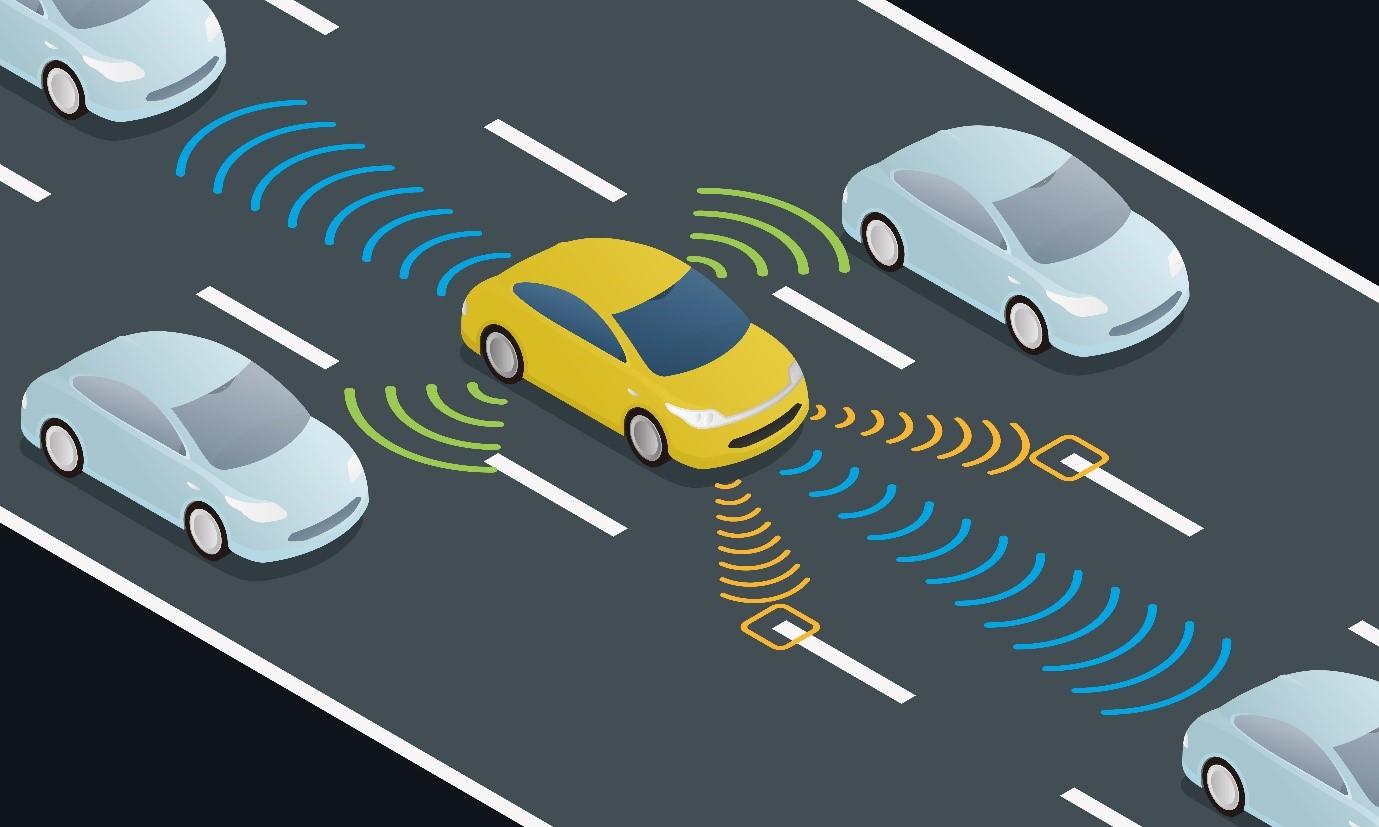Every year, several people become a victim of road accidents. As per records, more than 90% of road accidents happen due to human factors, including talking on the phone while driving, drowsiness, driving under the influence of alcohol, speeding up, etc. That is why the automobile sector is coming up with new technologies to ensure road safety and make road trips smoother, securer, and more comfortable. One such example is ADAS technology.
The main goal of Advanced Driver Assistance Systems (ADAS) is to reduce road risks that are caused by human factors. It includes advanced technologies and safety systems that assist drivers during road journeys.
Now you must be wondering about the ‘ADAS meaning’, how it works, and what benefits it could offer drivers.
Let’s dig in more to discover all the details about the ADAS system.
What is ADAS technology?
ADAS, or Advanced Driver Assistance Systems, encompasses a range of electronic technologies designed to assist drivers in operating their vehicles more safely and efficiently. By providing real-time information and interventions, ADAS can significantly reduce the risk of accidents, minimize fuel consumption, and enhance overall driving experience.
The ADAS system in cars also assists the drivers by giving them alerts using sound, vibration, and pictographs. Its AL-powered algorithm works in real-time to safeguard people against any possible accidents. It uses various applications to notify drivers, which include:
- Pedestrian detection
- Traffic sign recognition
- Lane departure warning
- Automatic emergency braking
These applications work together to make ADAS technology a success. They make sure to incorporate the latest interface standards and use multiple vision-based algorithms so that the system can also support real-time media, sensor subsystems, and vision co-processing.
Now that you know the ‘ADAS meaning,’ it’s time to understand how it works in your vehicles.
How does the ADAS system work?
Recently, automobile manufacturers introduced new vehicle models with ADAS technology built into their original designs. The technology uses multiple sets of data inputs to enable safety features for the drivers. These features ensure the driver’s safety and assist them while driving.
Some of these features include automotive imaging, which uses high-quality sensors that exceed the human eye’s ability in terms of 360-degree coverage, high visibility in disturbing weather and lighting conditions, 3D object resolution, and more.
Another great feature is the LiDAR (light detection and ranging) which uses more cameras to enhance the computer vision to transform various outputs into 3D quality. These additional cameras are fully capable of discerning between static and moving images in bad-lightning situations.
In addition, future generation ADAS in cars will also have the feature to plug into wireless network connectivity to ensure higher road security for drivers.
Types of ADAS
Advanced Drivers Assistance Systems are of two types-
1. Passive advanced driver assistance systems
In passive advanced driver assistance systems, the computer system sends drivers alerts about any danger instead of taking direct action to control the vehicle.
These include warning alert systems such as sirens, flashing lights, or vibrations. Passive ADAS provides real-time data about the driving conditions and environments and alerts about possible risks through visual, auditory, and haptic modes. This way, the drivers receive critical information to act according to their best judgment on the road.
Intuitive visual cues such as symbols or colours are extensively used to communicate messages to the driver.
2. Active advanced driver assistance systems
Active advanced driver assistance systems can take control of the vehicle during emergencies to enhance safety and driving comfort. This includes functional features such as automatic emergency braking (AEB) that apply the brakes without the driver’s actions to prevent accident or collision, adaptive cruise control (ACC), lane centring, lane-keeping assist, and traffic jam assist.
For instance, adaptive cruise control can automatically adjust the vehicle’s speed to maintain a safe following distance on the road. Meanwhile, lane centring and lane-keeping assist actively help steer the vehicle back into its lane if it starts to drift.
These automated ADAS technologies enhance vehicle safety, reduce accidents, and provide a more comfortable driving experience. These elements are the foundation of fully/semi-autonomous vehicles.
The importance of Advanced Driver Assistance Systems
Let’s start with a simple ‘ADAS meaning.’ It is a system implemented in your vehicle to keep you safe while driving. The primary purpose of these safety systems is to reduce traffic accidents, and vehicle injuries and increase road safety.
ADAS in cars works in two ways- through automated driving features such as automatic emergency braking systems. At the same time, it offers features like lane departure warning systems to improve drivers’ awareness. Thus, helping to reduce instances of road accidents and injuries with smart technology.
Let’s look at an example here. In your ADAS-enabled car, the automatic braking system will guide you on the road and prevent you from hitting any other vehicle. In addition, the cameras and sensors in the ADS system in your car will help you see better on the road while simultaneously alerting you of any nearby dangers.
Benefits of the Advanced Driver Assistance Systems
Over time, ADAS has played a vital role in reducing the number of vehicle collisions on the road. It is mainly designed to ensure driver’s safety and make rides smoother and better. Let’s look at its many benefits.
- Enhancement of safety systems to promote safe driving. ADAS is designed to avoid collisions on the road by using technologies that assist drivers by notifying them about any potential dangers.
- ADAS adaptive features such as adaptive cruise control, automated lighting, pedestrian crash avoidance mitigation (PCAM), etc., help alert drivers by giving them navigational warnings such as lane departures, vehicles in blind spots, traffic, etc.
- The ADAS system mainly works as a co-pilot as it alerts and notifies the driver of any potential road dangers and guides them to drive safely with the help of different features.
- It helps to save fuel consumption as well. Since ADAS changes the driving style of the vehicle, it can save up to 15% of fuel.
- ADAS system also reduces maintenance costs of vehicles by up to 6% as it minimises the chances of accidents and any wear factors of the vehicle’s tyres or pads.
The future of ADAS
Today, automotive electronic hardware and software require advanced processes and technologies to make driving a better user experience. This is where the Advanced Driver Assistance Systemscome to stay. The future of ADAS is bright because it:
- Increases reliability
- Helps to drive down costs
- Shorter development cycles
- Improves road safety for everyone
Also, as per a study by Global Edge Soft, the future ADAS will come up with wireless network connectivity that you can easily install in your cars. In simpler words, cars will communicate better, resulting in a safer and more convenient automated driving experience.
To sum up
Lately, ADAS has become one of the most important developments in the automobile industry as it ensures human safety by making driving experiences safer and smoother. So, make sure to implement the ADAS system in your car for you and your loved one’s safety.
And, if you’re in the market for a brand-new car, Tata Capital is here to assist you. With easy processing and reasonable interest rates, you can get quick vehicle loans at Tata Capital and purchase your dream car today.
Check out our website to know more about our affordable loans.
FAQs
ADAS refers to Advanced Driver Assistance Systems. These systems use advanced technologies to assist drivers in operating their vehicles more safely and efficiently. With real-time assistance, these systems help reduce the risk of accidents, optimise fuel consumption, and enhance driving efficiency. These systems include features like adaptive cruise control, lane departure warning, and automatic emergency braking to prevent accidents and reduce driver workload.
The purpose of ADAS is to enhance driver safety and comfort by assisting drivers with advanced technologies. These systems aim to prevent accidents, reduce driver errors, and make driving more comfortable through features like automatic braking, lane-keeping assistance, and adaptive cruise control.
On a car, ADAS refers to integrated systems designed to assist the driver in various tasks. These systems enhance safety and driving convenience through features like collision avoidance, lane-keeping assistance, and adaptive cruise control. They use sensors, cameras, and other technologies to monitor the environment and assist the driver in efficiently operating the vehicle.
ADAS uses sensors, cameras, radar, and software to monitor the vehicle's surroundings and assist the driver. These systems can provide warnings, like lane departure alerts in passive ADAS, or take action, such as automatic emergency braking in active ADAS, to prevent accidents. They enhance driving safety and convenience by offering real-time assistance based on environmental conditions.


 7 mins read
7 mins read

 Previous Post
Previous Post









